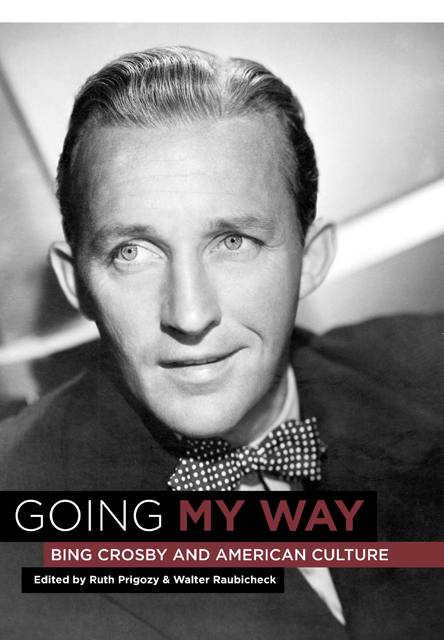Book contents
- Frontmatter
- Dedication
- Contents
- List of Illustrations
- Foreword
- Preface
- Acknowledgments
- Introduction Bing Crosby—Nothing Is What It Seems
- Part 1 Theoretical Perspectives on Crosby
- Part 2 Cultural Perspectives on Crosby
- Part 3 Historical Perspectives on Crosby
- Personal Comments
- Selected Bibliography
- List of Contributors
- Index
8 - Bing Crosby, Walt Disney, and Ichabod Crane
Published online by Cambridge University Press: 11 March 2023
- Frontmatter
- Dedication
- Contents
- List of Illustrations
- Foreword
- Preface
- Acknowledgments
- Introduction Bing Crosby—Nothing Is What It Seems
- Part 1 Theoretical Perspectives on Crosby
- Part 2 Cultural Perspectives on Crosby
- Part 3 Historical Perspectives on Crosby
- Personal Comments
- Selected Bibliography
- List of Contributors
- Index
Summary
From the very beginning of his career as a producer, Walt Disney turned to fairy tales, folklore, and children's literature as a source of inspiration and adaptation for his animated films. When he determined to produce a feature-length animated film in 1935, among the works he considered, before settling on the Grimm Brothers’ story “Snow White and the Seven Dwarfs,” was Washington Irving's “Rip Van Winkle.” From the time of its publication in 1819, the story had inspired hundreds of dramatic versions, as well as operas, stage musicals, and ultimately films. At the time, however, the film rights were held by Paramount Studios, which refused to release them to Disney. Some fourteen years later, Irving would again come to mind, but this time the story would be “The Legend of Sleepy Hollow” (1820), probably his second most widely known and popular short story.
The adaptation would constitute one-half of a double-bill feature, the first half based on the British classic The Wind in the Willows (1908) by Kenneth Grahame. It was released on October 5, 1949, under the title The Adventures of Ichabod and Mr. Toad, and despite an uneasy marriage of mood and subject matter, the critics welcomed the film as a return to the classic animation the Disney Studios had largely abandoned in the late 1940s for combined live-action and animation anthologies, such as The Three Cabelleros (1945) and Song of the South (1946). The two parts would have a longer life when released separately for television and theatrical showings and as videotape reissues.
Disney had learned by then the value of using well-known personalities to provide easily-identifiable voices for the characters and narrators in his films, especially singers like Nelson Eddy, Dinah Shore, Dennis Day, Francis Langford, the Andrews Sisters, and even Roy Rogers and the Sons of the Pioneers. Having selected the ultimate British accent of Basil Rathbone to narrate the adventures of Mr. Toad and the denizens of Toad Hall, he would naturally turn to a quintessentially American voice to narrate the second half of the film.
- Type
- Chapter
- Information
- Going My WayBing Crosby and American Culture, pp. 99 - 106Publisher: Boydell & BrewerPrint publication year: 2007
- 1
- Cited by



